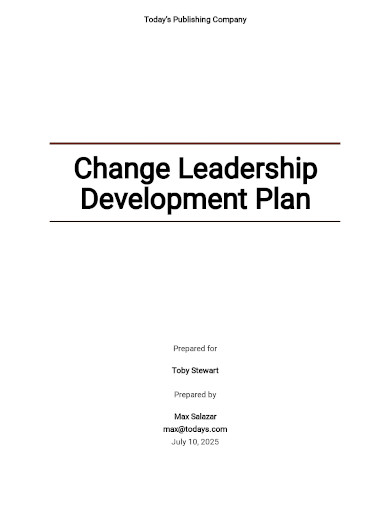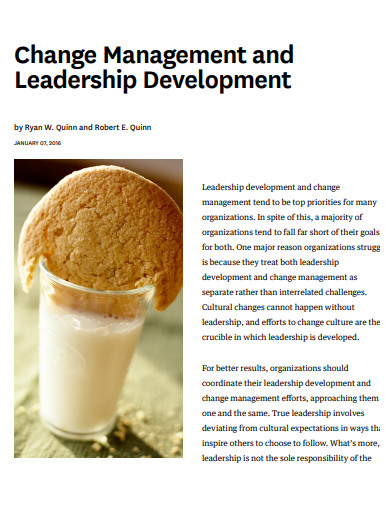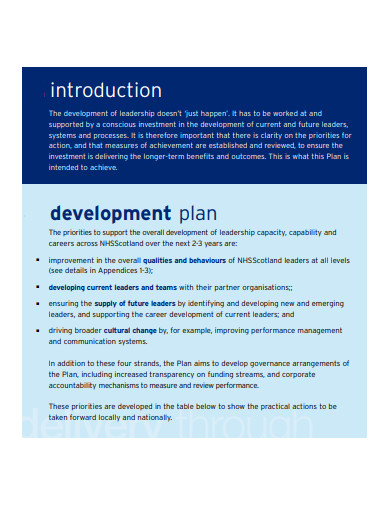Leadership development is the activity of enhancing the capabilities of an individual to assume leadership roles and responsibilities. This includes several programs in management, executive education, seminars, workshops, and even internships. These opportunities are often focused on developing knowledge, skills, self-awareness, and abilities that are needed to lead effectively. In the business and corporate space, having a strong leadership base within the company can ultimately determine the success of your organization. If your organization is committed to developing its leaders, especially those who fall on managerial positions, then you can expect a significant competitive advantage in the industry by improving the basics of your management. Attracting, developing, and retaining talent, driving strategy execution, and increasing your chances of success, especially when you are dealing with something as spontaneous as change.
Although, despite the importance of proper leadership training and development, a lot of businesses still tend to fall short on it. And more often than not, a lot of people are placed in leadership roles without any proper training or experience. A lack of proper leadership in your organization can be very harmful in a lot of ways. It can, for example, result in lost productivity, high turnover, low morale, absenteeism, and a lot more.
That is why it is important for companies, businesses, and organizations to be able to come up with a comprehensive enough leadership development plan to be established in and around their company. The document is an incredibly useful tool to ensure that your company has a strong pipeline to produce future good leaders, and improve current ones. The growth and evolution of an organization is linked to the growth and evaluation of its leadership. Being able to create a solid leadership development plan helps outline most of the detailed steps in order to identify and nurture the next generation of leaders in your organization. Changes in management or other managerial positions are not always easy for every company or organization. There might be a lot of changes in the protocols and operations within your company. So naturally, you’d want your company to slowly ease themselves into the new management, as well as for your new leaders to be able to lead the entire team from the get go.
Leadership is always an important component everywhere, especially when you are trying to work with a lot of people. So writing a change leadership development plan may not be as simple as it may seem. Before you attempt writing the document yourself, first check out these change leadership development plan samples that we have listed for you right below. Once you’ve acquainted yourself properly with the document, feel free to use these samples as guides or even as templates for when you begin drafting your own leadership development plan.
3+ Change Leadership Development Plan
1. Change Leadership Development Plan

2. Change Management Leadership Development Plan
3. Simple Change Leadership Development Plan
What Is a Change Leadership Development Plan?
A leadership development plan is a strategic plan that is designed to assist employees and potential leaders gain and develop their own leadership competencies to prepare them for management and leadership roles with your organization. A leadership development plan essentially outlines the different steps that you need to take in order to become a better leader. It should include a list of the skills that you need to improve, the responsibilities that you need to take on, and the tasks that you need to accomplish. A lot of leadership development plans work as agreements between an employer and an employee.
For a change leadership development plan, the benefits extend beyond a single individual. When leadership development is aligned with the overall business strategy, organizations will be able to like their own investments in supporting potential leaders like in internal training programs or reimbursements in tuition to expand goals and strategic plans. These efforts can lead to an even bigger likelihood that your management and other stakeholders within the organization will give you the green light on further developing your leadership plan. Overall, leadership development plans are critical for businesses who wish to continue moving forward in times of crises and when working with competitive markets.
A well drafted plan has a lot of potential in keeping the most valuable individuals in your organization properly engaged and discourage them from seeking alternative opportunities from competitors in the industry. The stronger your leaders are, the greater potential your organization has to differentiate itself and remain viable in a constantly changing market.
Elements of a Change Leadership Development Plan
After giving some thought to your long term leadership goals and the qualities of a leader that you want to improve, you should now be set to create your own leadership development plan. When writing a development plan, you need to remember that the components within may vary between different kinds of people. The writing process of the plan may also be different from one organization to another. Others may use a spreadsheet, some may prefer a chart. Regardless of the format or the way it is drafted, there are several elements of the document that you need to remember and keep in mind.
1. Core skills to master
Leaders may have a number of job responsibilities that are specific to the role that was given to them. This can include running meetings, providing feedback, sharing information in front of multiple people, and decision making. The first thing that you need to do when writing a leadership development plan is identify the skills that are aligned with your leadership development goals that are not a part of your existing job responsibilities. If you know someone in you workplace who currently has these skills, try to ask them if you can practice with them for the meantime. If not, then you can look for external resources that can help you build these skills.
2. Experience gaps to close
In addition to tactical skills, there are also other strategic responsibilities that a leader can take on including starting a new project, working out a project that is not going well, managing large scale ventures, and managing business operations within a crisis.
3. New Relationships to build
As a leader, you need to know how to interact with different stakeholders on a near regular basis. Some are only within your organization like department heads, front-line employees, and managers with varying degrees of skills. While others are outside your own organization and range from clients to suppliers and board members from other businesses. When developing a leadership development plan, you need to be able to identify these different entities and gauge which of them would you like to have a stronger, mutually beneficial business relationship with.
4. Specific tasks to delegate
Effective leaders know how to balance day-to-day tasks and long-term commitments or responsibilities. They know when to focus with work that are most closely aligned with their own expertise and trust others within the organization to be able to work with everything else to ensure that none of the projects are delayed and the employees are doing their work. Enumerate the activities that work best with you and your role, along with the activities that are able to be completed by others.
5. Key action items to complete
Like I said before, the specifics of a leadership development plan should also include the strengths as well as the potential areas for improvement. For every area that you plan to improve, include an action item, the timeframe that in which you want the task to be completed, and the cost of resources that are to be consumed. Action items can also be meetings with your mentors or managers, reading books on leadership, completing a leadership assessment, or identifying training and educational opportunities.
6. Critical indicators of success
Leaders are evaluated not only by their own success but also the success of their team. Your development plan should list the indicators for your success, for both the leader and the team. Your indicators of success can include but are not limited to;
- Improving the quality of work
- Improving teamwork and morale
- Increasing delegation of responsibility
- Strategic planning and preparation
- Continuous learning for you and your team
- Recognizing the contributions of the team
FAQs
What are the five components of a leadership development plan?
- Coaching
- Accountability
- Change Management
- Influence and Negotiation
- Communication
What are the five SMART objectives?
- Specific
- Measurable
- Achievable
- Realistic
- Timed
What are the 7 leadership skills?
- Willingness to listen
- Perseverance
- Honesty
- Selflessness
- Decisiveness
- Trust
- Integrity
A leadership plan should remain as a live document. It should be something that you revisit on a regular basis to make sure that you are addressing the different areas of improvement that you have identified for yourself and for the set of leaders that you are planning to put in place. As well as meeting the timelines that you have established to take on new responsibilities.
Related Posts
FREE 3+ Management Training Proposal Samples in PDF MS ...
FREE 10+ Marketing Training Proposal Samples in PDF MS Word ...
FREE 8+ Executive Coaching Proposal Samples [ Group, Request ...
FREE 10+ School Development Plan Samples in MS Word Pages ...
FREE 10+ Change Impact Assessment Samples [ Management ...
FREE 10+ School Continuous Improvement Plan Samples in MS ...
FREE 9+ Leadership Essay Samples in MS Word PDF
FREE 9+ Sample Succession Plan Templates in PDF MS Word
FREE 9+ Sample Training Course Website Terms and Conditions in ...
FREE 10+ Talent Management Strategy Samples in DOC PDF
FREE 8+ Consultant Business Plan Samples in PDF MS Word
FREE 10+ Hospital Operational Plan Templates in PDF MS Word
FREE 5+ Comprehensive Training Plan Samples in PDF
FREE 10+ Leadership Statement Samples [ Vision, Mission, Position]
FREE 10+ Workshop Action Plan Samples [ Reconciliation, Tribal ...


